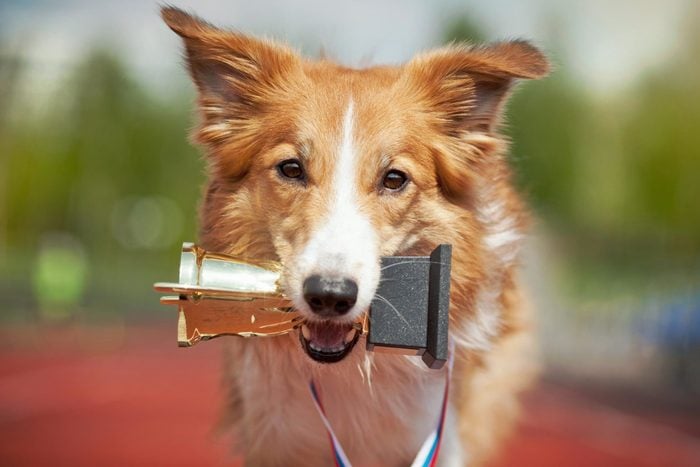
Smartest dog breeds, ranked for intelligence
Dogs have been humankind’s faithful companions since as far back as the Stone Age, and it’s not just because they’re so dang cute. They’re intelligent in a way that’s ideal for humans, a state of affairs that was entirely intentional; over the millennia, humans bred dogs to be perfect canine companions. At any moment in history, the smartest dog breeds have served as more than man’s best friend: They’ve been navigators and field guides, wartime comrades, detectives, garbage collectors, movie stars and security consultants, as renowned canine researcher and professor Stanley Coren, PhD, points out in his iconic book The Intelligence of Dogs.
“There are three types of dog intelligence,” says Coren, who defines canine smarts by the way dogs interact with humans:
- Instinctive: What the dog has been bred by humans to do
- Adaptive: How well the dog learns from its environment to solve problems
- Working and obedience: How hard the dog is willing to work to please its people and do its jobs
What underpins all three, explains Coren, is the dog’s desire and ability to communicate effectively with humans—both by understanding its human’s signs, actions and commands, and by expressing itself via barks, body movements and actions.
The average dog can understand 160 words, according to Coren, and some dogs comprehend as many as 250 or more. But what may be even more fundamental to effective communication between dogs and humans is that dogs, as a general rule, actually care. “Dogs are very attentive to and responsive to us,” Alexandra Horowitz, head of the Dog Cognition Lab at Columbia University’s Barnard College, told the American Kennel Club (AKC).
Although this is true for all pooches, the smartest dog breeds have certain traits that put their intelligence a step above. Reader’s Digest consulted seven pet experts to compile this list of the 18 smartest breeds. So how smart are dogs exactly? The pups on our list may not be ready to challenge you to a game of cards, but they do their jobs, and well.
Get Reader’s Digest’s Read Up newsletter for more pet insights, cleaning, humor, travel, tech and fun facts all week long.
About the experts
|
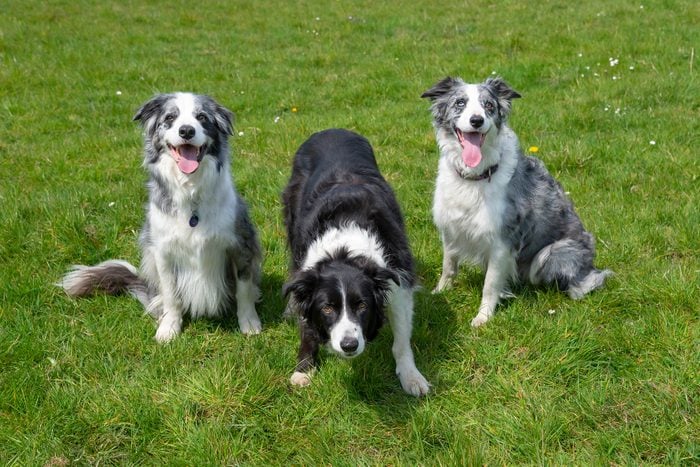
Smartest dog breeds ranked
- Border collie
- Poodle
- German shepherd
- Golden retriever
- Doberman pinscher
- Shetland sheepdog
- Labrador retriever
- Papillon
- Rottweiler
- Australian cattle dog
- Pembroke Welsh corgi
- Miniature schnauzer
- English springer spaniel
- Belgian Tervuren
- Schipperke
- Collie
- Keeshond
- German shorthaired pointer
Coren’s research is still considered the most reliable index of comparative dog breed biddability. However, it was published in 1994, when the AKC recognized far fewer breeds. “Today any ranking would doubtless [also] include the Pyrenean shepherd and the Belgian Malinois near the very top of the list,” says dog breed expert Caroline Coile, PhD, author of Barron’s Encyclopedia of Dog Breeds.
She notes that dog breeds that are more biddable tend to be those that were bred to perform jobs, like retrieving or herding. For these working dogs, being able to follow commands from a distance was critical. What that means today is that these dog breeds can still have such a strong desire to work that it can present challenges in a living situation, something prospective owners should be aware of before choosing a pup.
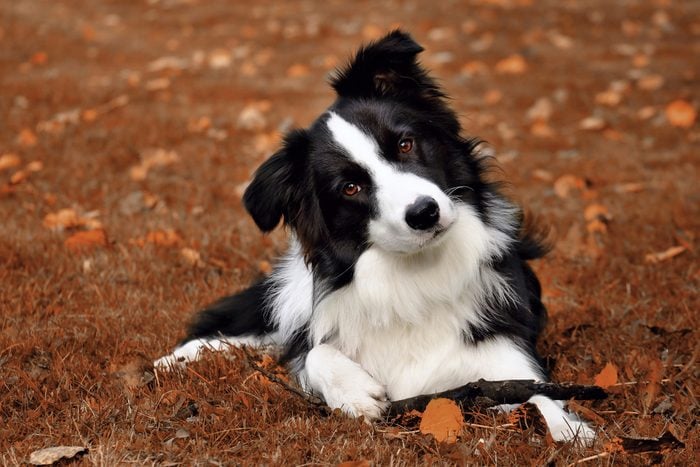
1. Border collie
According to The Intelligence of Dogs, which ranks 131 dog breeds in terms of their relative intelligence, the border collie is the smartest dog breed known to man. Need proof? Chaser, a linguistically gifted border collie from South Carolina, could recognize over 1,000 words.
But it’s not just a matter of being “book smart.” A descendant of European herding dogs that lived along the rocky borders of England, Scotland and Wales, the border collie was bred to be crafty enough and athletic enough to survive the treacherous landscape. It’s also blessed with a strong work ethic. The AKC, which recognized the breed in 1995, describes the border collie not only as “smart, affectionate and energetic” but also as a “remarkably bright workaholic.”
Border collie owners should be prepared to provide their doggo with lots of mental and physical stimulation, according to the AKC. The breed is so intelligent and good at communicating with humans that it’s not unreasonable to imagine that many are quite adept at getting what they want from their owners. That’s why we’re proclaiming the border collie the smartest dog in the world.
| Breed overview | |
| Height: | 18 to 22 inches |
| Weight: | 30 to 55 pounds |
| Life expectancy: | 12 to 15 years |
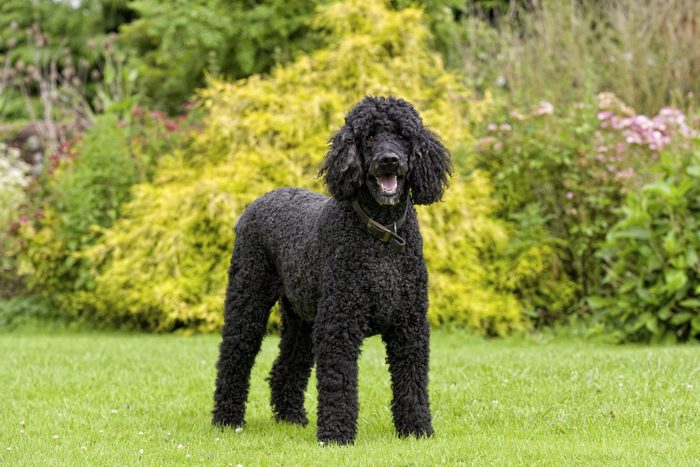
2. Poodle
Despite often being called a French poodle, the poodle is actually a German breed developed as a water retriever. It’s often seen as high maintenance (that curly hair isn’t going to style itself, after all). But don’t be fooled into thinking that makes them any less clever. The breed gets high marks for its emotional and cognitive intelligence. In fact, Coren ranks the poodle second among the smartest dog breeds, right after the border collie.
And yes, sure, the dogs can look a bit posh, but they’ve also been employed during wartime to deliver supplies to soldiers on the battlefield. The job required obedience, steadfast focus and clear-headed decision making, and quick-learning poodles became the obvious choice. Wendy Hauser, DVM, says poodles are readily trainable and enjoy activities that allow them to be challenged, such as hunting, tracking, agility sports and obedience work.
On top of all that, the breed has a jovial sense of humor and a tendency to perform tricks and deliberately act cute. Not that humans need more reasons to love ’em. No matter the size—from teacup to standard—poodles are oodles of fun and majorly cute.
| Breed overview | |
| Height: | 15 inches or more |
| Weight: | 50 to 70 pounds |
| Life expectancy: | 10 to 18 years |
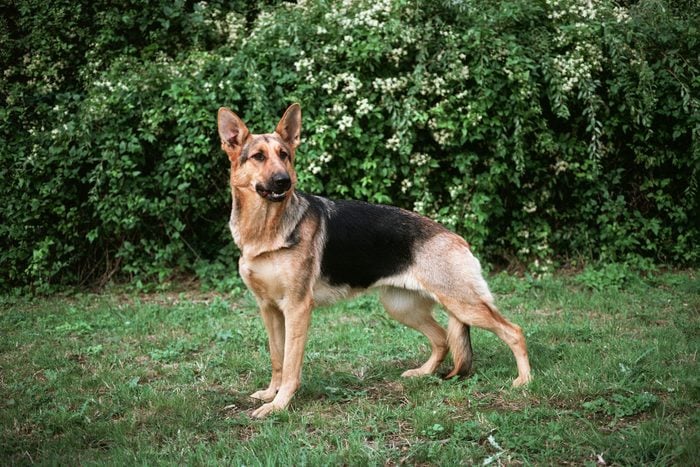
3. German shepherd
The German shepherd is the second most intelligent herding dog and the third most intelligent dog overall, according to Coren’s ranking. The breed was bred for its high intelligence (they can learn a new command on the first go, according to the AKC), high level of focus, desire and ability to be obedient (which makes training easy) and a protective instinct with regard to its fellow “pack” members.
One of this breed’s strengths is its ability to evaluate tricky situations and decide on the best course of action. That’s one reason you’ll so often see German shepherds working in law enforcement, with search-and-rescue teams and as service dogs for people with disabilities.
| Breed overview | |
| Height: | 22 to 26 inches |
| Weight: | 50 to 90 pounds |
| Life expectancy: | 7 to 10 years |
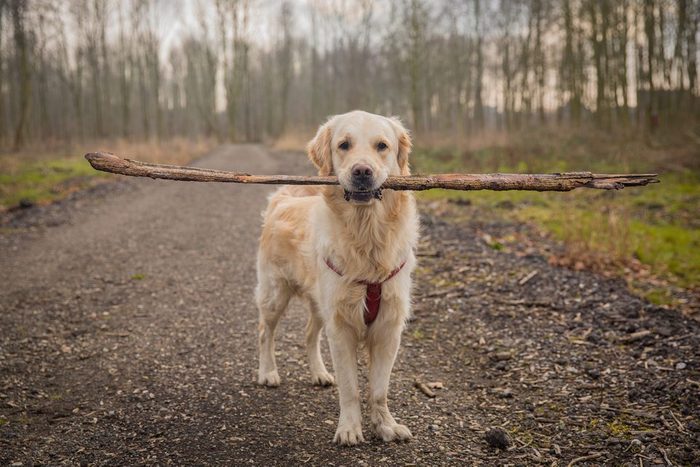
4. Golden retriever
Canine intelligence isn’t just about brainpower. When it comes to golden retrievers, their willingness to comply with commands or tasks asked of them by their owners is what pushes them into the No. 4 slot. Because of their impulse to please their humans, these pooches can be relied upon to act consistently in a variety of situations. Bred in Scotland to be hunting companions and game retrievers, they’re often employed in search-and-rescue operations, assisted by their relative agility and powerful gait.
As diligent a worker as the golden retriever is, it’s also beloved around the world as a dependable, obedient companion. A sunny disposition and an aptitude for learning commands (as many as 200 of them, most learned on the first try) make the golden retriever the preferred pet for people with disabilities.
| Breed overview | |
| Height: | 21.5 to 24 inches |
| Weight: | 55 to 75 pounds |
| Life expectancy: | 10 to 12 years |
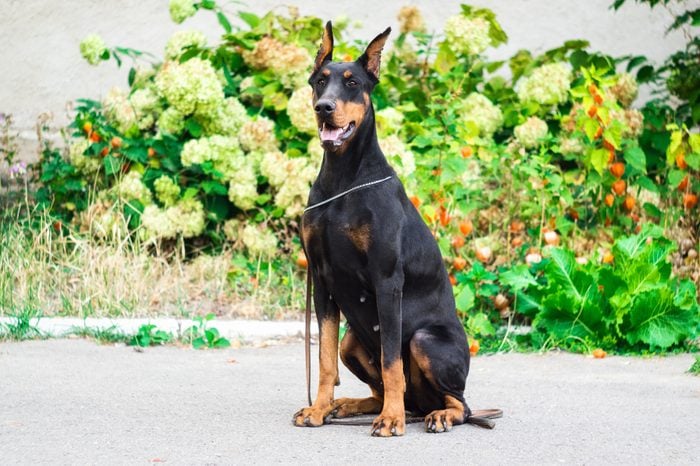
5. Doberman pinscher
Described by the AKC as fearless, loyal and alert, the highly intelligent and readily trainable Doberman pinscher was bred by a German tax collector who had a bit of extra time on his hands during the off-season, as well as an abundance of motivation to breed the perfect canine bodyguard. (Because, let’s face it: People can get awfully cranky when the tax collector comes to call.)
“Known for their fearless nature, speed and deep stamina,” these tough but elegant looking, robustly athletic creatures make ideal guard dogs, according to Coren. But as intimidating as this fierce-looking dog breed may appear, the breed is actually known for being quite gentle. That, and they’re among the dogs that take amazingly well to training.
| Breed overview | |
| Height: | 24 to 28 inches |
| Weight: | 60 to 100 pounds |
| Life expectancy: | 10 to 12 years |
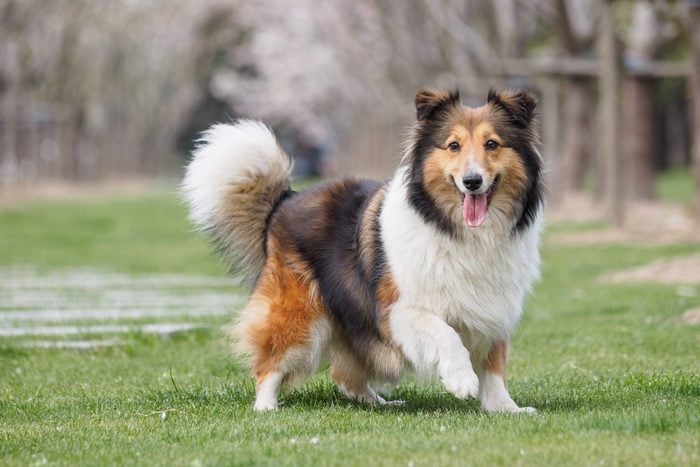
6. Shetland sheepdog
The compact Shetland sheepdog does everything a larger herding dog can do but on considerably less food. That’s precisely why they were bred as the “collie’s little cousin.” Farmers on the UK’s Shetland Islands used them to perform herding duties, and not just for sheep. The sheltie, as it is known by some, found work herding ponies and poultry as well.
Eager to please and motivated to keep trying until they get it right, shelties are great at learning new commands in just a few repetitions. Because of their relative intelligence, obedience and quickness on their feet, they’re ranked sixth on Coren’s list of the smartest dog breeds.
Like golden retrievers, Shetland sheepdogs are loved as much for their canine intelligence as for their personalities, and they’re also one of the best dog breeds for families with children. And yet as tiny as these fluffballs are, they also make excellent guard dogs, thanks to their ability to sense danger. That’s instinctive intelligence right there.
| Breed overview | |
| Height: | 13 to 16 inches |
| Weight: | 15 to 25 pounds |
| Life expectancy: | 12 to 14 years |
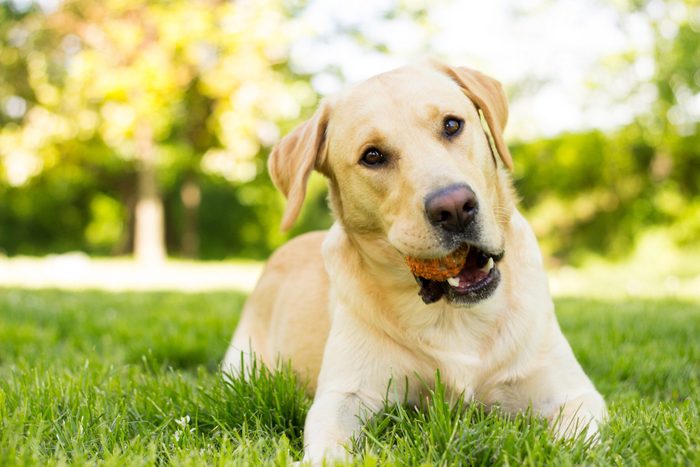
7. Labrador retriever
Developed by 16th-century settlers of the Canadian island of Newfoundland, the Labrador retriever is a descendant of the St. John Dog (which is no longer around) and a relative of the Newfoundland. The breed got its name in the 19th century, after English nobles returned from a Canadian visit with what they called the “Labrador dog.”
Once on English soil, the Labrador retriever’s breed characteristics (like its water-repellant coat) were honed even further so it would be adept at retrieving ducks on hunts. Coren ranks it the seventh most intelligent dog breed, highlighting its stunning sense of smell and ability to make good judgments based thereon.
The Labrador retriever is known for self-training—it can and wants to learn from humans, not by being taught but by watching and imitating. For all these reasons, this lovable pup holds the record as the most popular breed in the United States for the longest period of any breed. Labradors are also a favorite among people with disabilities and one of the best emotional support dogs.
| Breed overview | |
| Height: | 21.5 to 24 inches |
| Weight: | 55 to 80 pounds |
| Life expectancy: | 10 to 12 years |
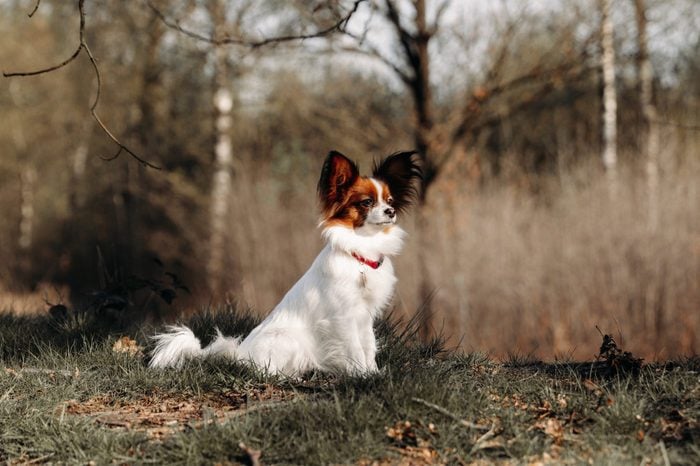
8. Papillon
In Coren’s ranking, the smallest of the smartest dog breeds is the papillon. One of a number of adorably big-eared pups, the breed can trace its roots back almost 700 years—and that plays a significant role in its intelligence, according to Caitie Steffen, a pet expert with animal activity tracker company Whistle, and Angela Hughes, DVM, PhD, a veterinarian geneticist with dog DNA test kit Wisdom Panel. As one of the oldest dog breeds, the papillon has had more time than many to evolve into one of the world’s smartest dogs, and its breeders have used that time wisely.
The papillon, whose name is the French word for “butterfly” and a nod to its winglike ears, originated as a companion for members of the nobility. According to the AKC, they come from European spaniel lineage but were bred with toy dogs to become miniaturized. Their happy, outgoing demeanor is coupled with an eagerness to please and a high aptitude for learning and obeying commands, making these little guys natural companions.
| Breed overview | |
| Height: | 8 to 11 inches |
| Weight: | 5 to 10 pounds |
| Life expectancy: | 14 to 16 years |
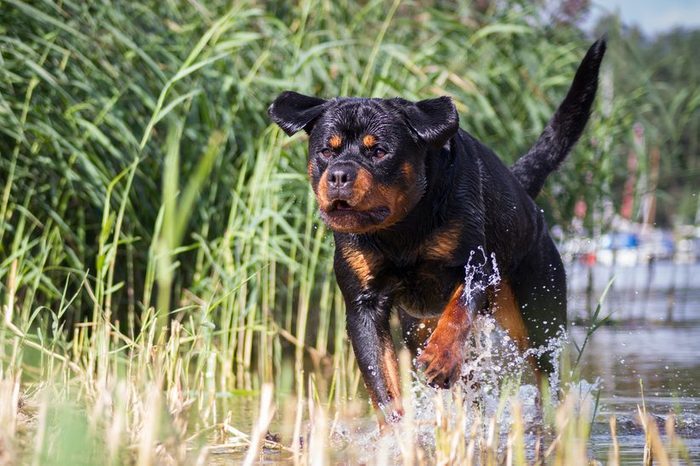
9. Rottweiler
The Rottweiler dates all the way back to the days of the Roman Empire, when it was used to herd livestock. “Today, Rotties are revered as one of the smartest dogs for their sharp perception, unwavering loyalty and acute awareness; it’s why they’re often employed as search-and-rescue dogs, guard dogs and police dogs,” says holistic pet therapist and author Sally Morgan. Coren ranks the Rottweiler ninth among intelligent dog breeds, making it one of the biggest dogs in size and smarts.
The powerful, rugged, robust Rottweiler is also known for being exceptionally affectionate and loyal, according to both Coren and the AKC. Not only do they make fantastic police dogs, but they’re also great obedience competitors, service dogs, therapy dogs and everyday pets. Although Coren believes Rottweilers have acquired a reputation for being fearful, he points out that the truth is precisely the opposite. “They do not shy away from defending their masters and family,” he says.
| Breed overview | |
| Height: | 22 to 27 inches |
| Weight: | 30 to 135 pounds |
| Life expectancy: | 9 to 10 years |
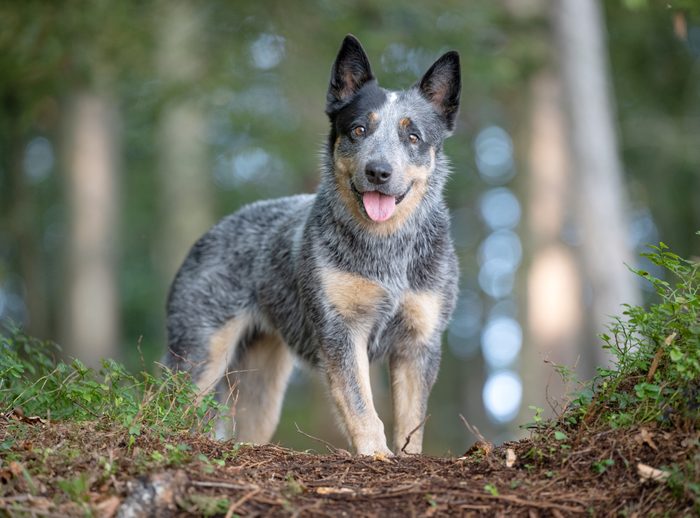
10. Australian cattle dog
These small but formidable dogs were bred in Australia (naturally) to herd cattle (naturally), and they’re often credited with having played an important role in the development of the country’s beef industry, Coren says. Highly motivated to do its job, the Australian cattle dog can be something of a challenge for a city dweller or anyone who doesn’t have the wherewithal to keep their little herder stimulated and busy.
To put it another way, if you don’t give these dogs something productive to do, they’ll find something to do with their time—something you probably won’t appreciate. On the plus side, Coren says this Australian dog breed is “so smart and organized” that the dogs “put their stuff back after using it.” Highly eager to learn, the Australian cattle dog makes a great partner for human pastimes such as catch.
| Breed overview | |
| Height: | 17 to 20 inches |
| Weight: | 35 to 50 pounds |
| Life expectancy: | 12 to 16 years |
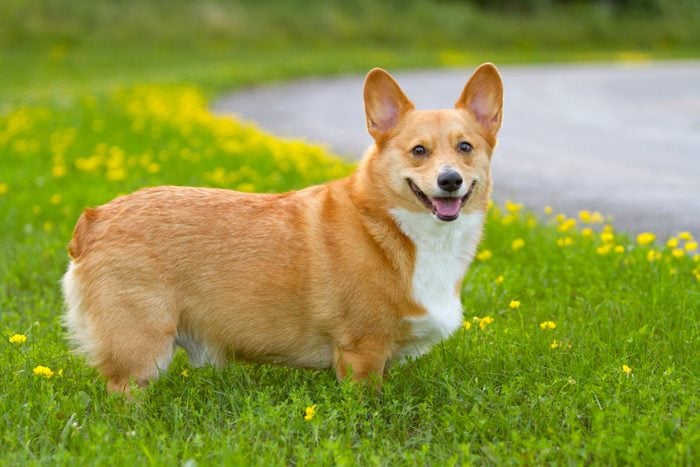
11. Pembroke Welsh corgi
Affectionate, smart and alert, the Pembroke Welsh corgi has been the go-to dog breed of the English royals since 1933, when the then Duke of York (who’d later be crowned King George VI) brought home corgis Dookie and Jane as pets for Elizabeth and her younger sister, Margaret. It’s estimated that in her 70-year reign, Queen Elizabeth raised more than 30 corgis.
Rated No. 11 in Coren’s ranking of the smartest dog breeds, the Pembroke Welsh corgi may have appealed to the royal family because the breed is known for being highly obedient, highly skilled at tracking and exceptionally athletic. Although its legs are short, its muscles are powerful. And with a fearless attitude, it makes a surprisingly effective watchdog. According to Dr. Hauser, this happy, short-legged dog breed is most fulfilled when there is a job to do. No herding work for your pup? Don’t be surprised if it herds family members, particularly the young humans.
| Breed overview | |
| Height: | 10 to 12 inches |
| Weight: | Up to 30 pounds |
| Life expectancy: | 12 to 13 years |
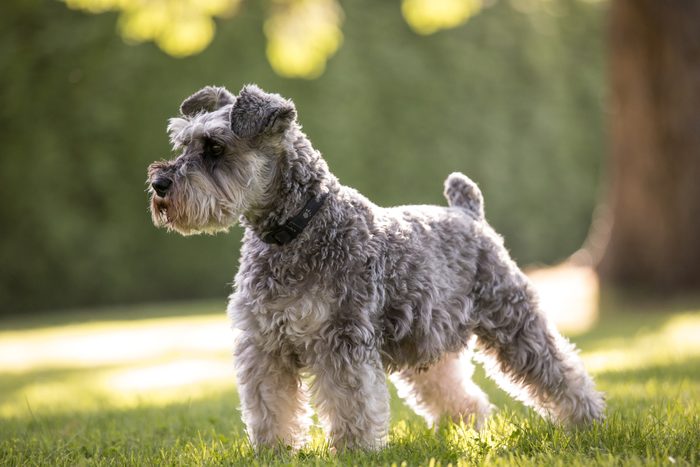
12. Miniature schnauzer
This adorably bearded dog, which is the smallest of the three schnauzer breeds, was ranked 12th among the most intelligent dog breeds, according to the Schnauzer Collective. “These quick learners enjoy being challenged and often excel at sports where they must use their intelligence, like agility and competitive obedience,” says Steffen.
As Dr. Hauser points out, “unlike many of the other breeds in the terrier group, miniature schnauzers have a strong desire to please and the smarts to do so.” Friendly, smart and obedient, these pups have big-dog confidence in a small-dog body. They were bred from the standard schnauzer to work on farms as a sort of four-legged pest control, sniffing out and dispatching rodents. This bearded brainiac also makes for a great city companion, thanks to its size, adaptability and general love of children and other small animals (rats excluded, of course).
| Breed overview | |
| Height: | 11 to 14 inches |
| Weight: | 10 to 15 pounds |
| Life expectancy: | 12 to 15 years |
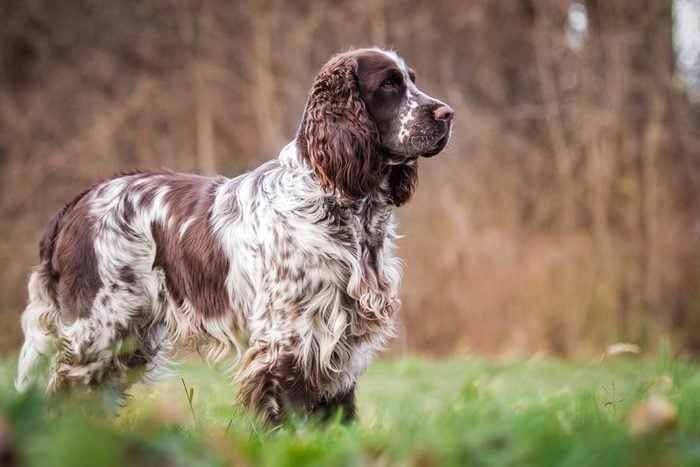
13. English springer spaniel
Blessed with an excellent memory and (when liver-colored) beautiful green eyes, the English springer spaniel is the 13th most intelligent dog breed on Coren’s list. Friendly, playful and obedient, it was bred centuries ago to flush out and retrieve game birds in the British uplands. For many years, as the breed was developed, the English springer spaniel was practically indistinguishable from the breeds that eventually came to be identified as the English cocker spaniel and the English field spaniel (both of which are among the 50 smartest dog breeds, according to Coren’s ranking system).
These days, though, the English springer spaniel has distinguished itself as a breed apart—one that is exceptionally bright, alert and eager to please. If there’s a downside to the breed, it’s that it has a tendency to become so attached to its humans that it can seem quite “miserable,” as the AKC puts it, when not invited to join in the fun.
| Breed overview | |
| Height: | 19 to 20 inches |
| Weight: | 40 to 50 pounds |
| Life expectancy: | 12 to 14 years |
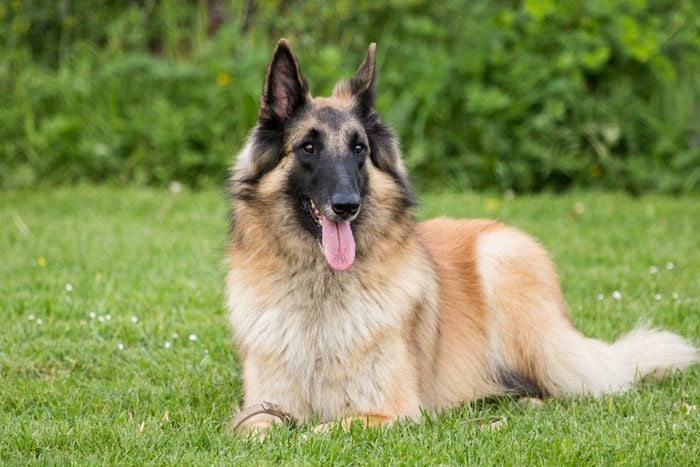
14. Belgian Tervuren
With its “intelligent nature and affinity for sports such as agility, tracking, herding and sledding,” the Belgian Tervuren has certainly earned its place among the smartest dog breeds, according to Steffen and Dr. Hughes. Coren places it at No. 14, just above the schipperke, a breed that almost looks like a miniature Tervuren (only in black).
Not only does the Belgian Tervuren have the brains and executive functioning skills to have once been a valued herder on many a Belgian farm, it is also a highly attentive companion with a strong protective instinct, incredibly loyal and great at tricks. A relatively rare dog breed, the Belgian Tervuren is nevertheless a bit easier to find in the United States than some of its fellow Belgian sheepdogs, such as the Malinois and the Laekenois.
| Breed overview | |
| Height: | 22 to 26 inches |
| Weight: | 45 to 75 pounds |
| Life expectancy: | 12 to 14 years |
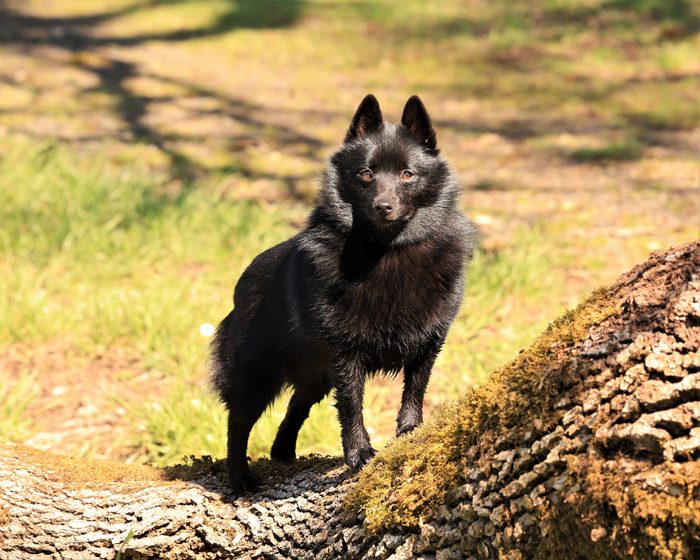
15. Schipperke
Known as the “little captain” because it was bred specifically for pest control on Flemish canal boats (schip is the Flemish word for “boat”), the Schipperke lands at No. 15 on Coren’s intelligent dog breeds ranking. It has a curious, clever and confident nature (how else could it catch rats on a boat?), a surprising amount of bravery for its size and a unique blend of intensity and mischievousness. Although the schipperke has been bred to have a delicate fox-like face, its muscular body is all about work, even at its small size. So if you buy or adopt one, make sure you have plenty of space for your new BFF to play.
| Breed overview | |
| Height: | 10 to 13 inches |
| Weight: | 10 to 16 pounds |
| Life expectancy: | 12 to 14 years |
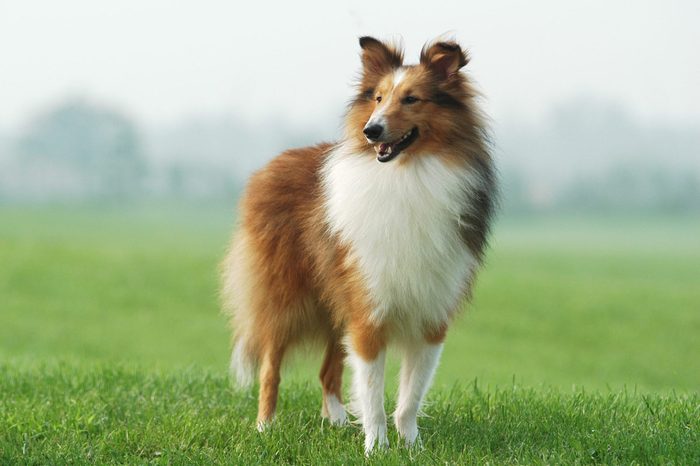
16. Collie
Long before Queen Elizabeth II became enamored of corgis, another queen of the realm was known for her devotion to friends of the four-legged variety. We’re talking about Elizabeth’s great-great-grandmother, Queen Victoria. She had countless dogs over the course of her life, but two of her favorites were collies who lived during the second half of the 19th century.
Yet it wasn’t until 1943 that the collie took the world by storm. That’s when the film Lassie Come Home premiered, introducing to the world a sensitive, loyal pup that never met a kid in peril she didn’t save. In other words, your typical collie. But these lovable long-nosed dogs care for more than just kids. They have such a high level of intelligence and such a great desire to be of assistance that they make reliable guides for the blind as well as highly competent rescue workers, according to Steffen and Dr. Hughes.
| Breed overview | |
| Height: | 22 to 26 inches |
| Weight: | 50 to 75 pounds |
| Life expectancy: | 12 to 14 years |
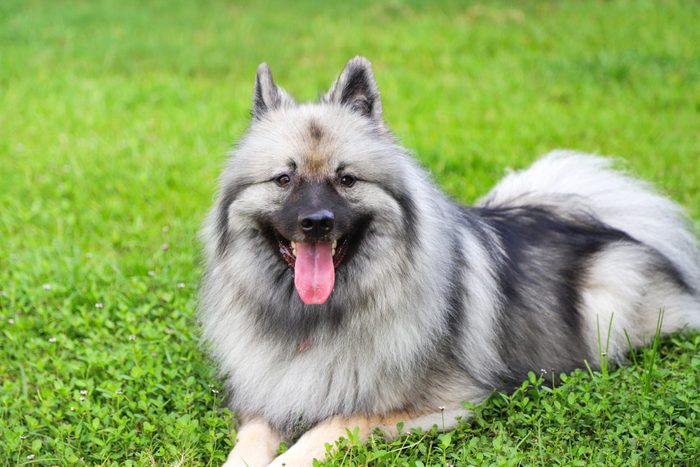
16. Keeshond
Another No. 16? You got that right. This adorable fluffball is tied with the collie for the 16th spot on our list of the smartest dog breeds. Once known as the Dutch Barge Dog, the Keeshond (pronounced “KAYZ-hawnd”) didn’t get to be where it is on Coren’s list just because it looks like a teddy bear sprung to life. We’re ranking the smartest dog breeds, after all, not the furballs we want to take home and snuggle. No, you can thank the breed’s intelligence and eager-to-please personality for that.
Originally bred to act as both guard dogs and companions on commercial barges, Keeshonden found themselves increasingly out of jobs as, over the years, the size of ships increased and the work required bigger dogs. But this beloved breed didn’t let that dull its bright outlook. These days, it may find work as a Seeing Eye or therapy dog. There’s just one thing to keep in mind if you’re thinking of bringing a Keeshond home: These pups are so sociable and get so bonded to their humans that they’ve been called clingy. But hey, with a face like that, clinginess might be a good thing.
| Breed overview | |
| Height: | 17 to 18 inches |
| Weight: | 35 to 45 pounds |
| Life expectancy: | 12 to 15 years |
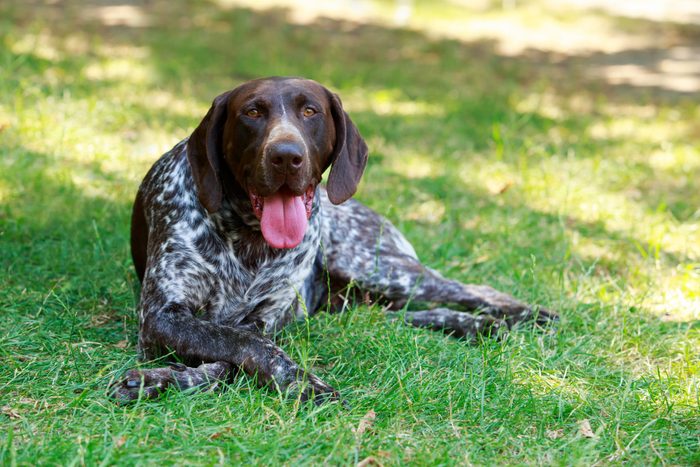
17. German shorthaired pointer
The German shorthaired pointer has almost everything going for it—and that’s largely by design. In 1861, German hunters set out to breed the ideal companion for all kinds of hunts, all kinds of game and all kinds of conditions. “They succeeded beyond their wildest imaginings,” according to the AKC, which calls the breed extremely intelligent and willing to please.
Slim and muscular, with fairly unusual coloring that often involves a good amount of “ticking” (fancy dog language for “fur freckles”), the German shorthaired pointer is highly trainable, loyal and loving. Although this breed is known for its steely confidence and self-control while out on the hunt, obedience training can go a long way toward helping a dog become its best, most obedient, smarty-pants self.
| Breed overview | |
| Height: | 21 to 25 inches |
| Weight: | 45 to 70 pounds |
| Life expectancy: | 10 to 12 years |
Why trust us
At Reader’s Digest, we’re committed to producing high-quality content by writers with expertise and experience in their field in consultation with relevant, qualified experts. For this piece, Lauren Cahn tapped her experience covering dog breeds and canine behavior, and then Caroline Coile, PhD, an award winning journalist specializing in canine breeds, health and science, gave it a rigorous review to ensure that all information is accurate and offers the best possible advice to readers. We verify all facts and data, back them with credible sourcing and revisit them over time to ensure they remain accurate and up to date. Read more about our team, our contributors and our editorial policies.
Sources:
- Stanley Coren, PhD, canine researcher, professor at the University of British Columbia and author of The Intelligence of Dogs; interviewed August 2023
- Alexandra Horowitz, head of the Dog Cognition Lab at Columbia University’s Barnard College; interviewed August 2023
- American Kennel Club: “Dog Cognition: Dogs Are Even Smarter Than You Think”
- Wendy Hauser, DVM, veterinarian and founder of Peak Veterinary Consulting; interviewed August 2023
- Caitie Steffen, pet expert with Whistle; interviewed August 2023
- Angela Hughes, DVM, PhD, veterinarian geneticist with Wisdom Panel; interviewed August 2023
- Sally Morgan, PT, CST, holistic pet therapist; interviewed August 2023
- Lazhar Ichir, founder of Breeding Business; interviewed August 2023
- Caroline Coile, PhD, an award-winning journalist specializing in canine breeds, health and science and the author of Barron’s Encyclopedia of Dog Breeds; interviewed January 2024

